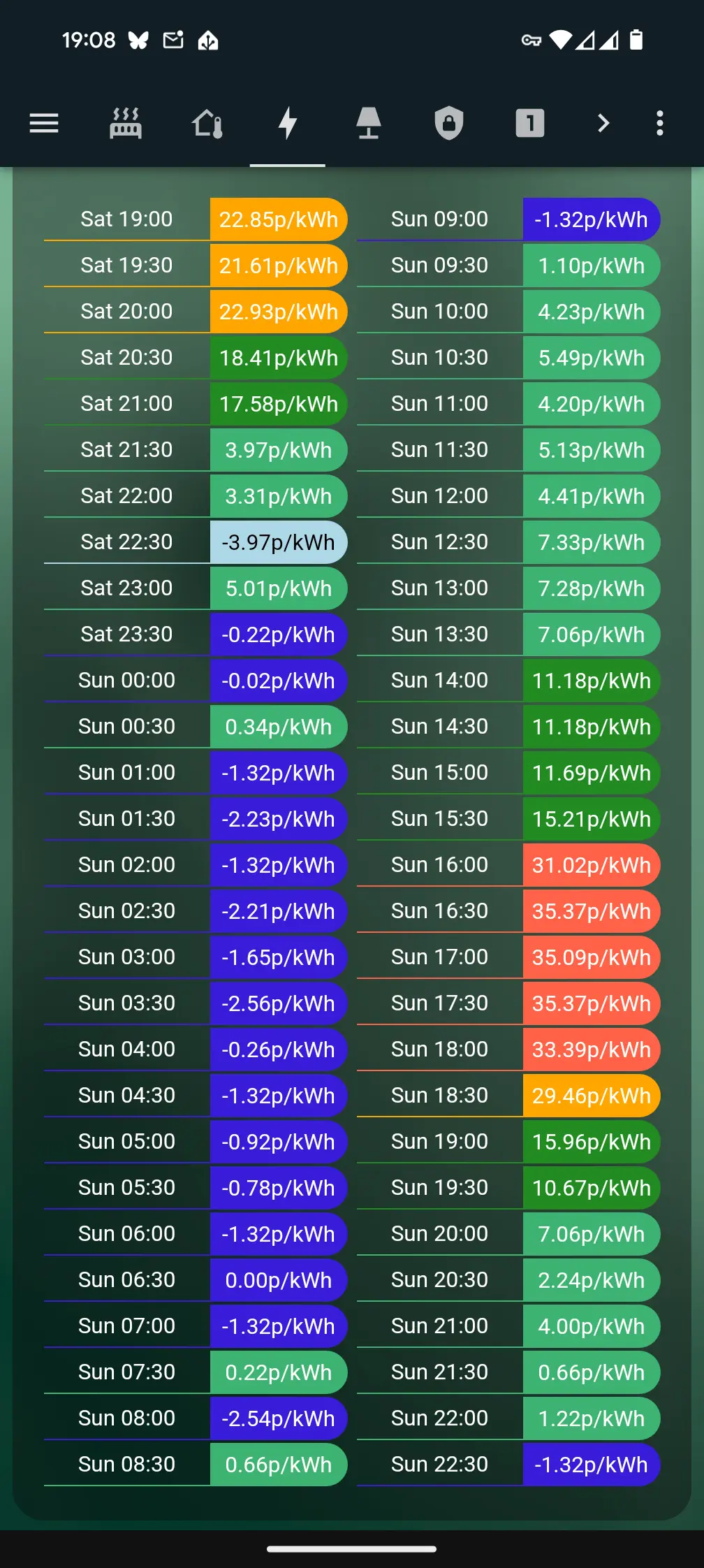this post was submitted on 23 Nov 2024
148 points (97.4% liked)
homeassistant
15372 readers
12 users here now
Home Assistant is open source home automation that puts local control and privacy first.
Powered by a worldwide community of tinkerers and DIY enthusiasts.
Home Assistant can be self-installed on ProxMox, Raspberry Pi, or even purchased pre-installed: Home Assistant: Installation
Discussion of Home-Assistant adjacent topics is absolutely fine, within reason.
If you're not sure, DM @GreatAlbatross@feddit.uk
founded 2 years ago
MODERATORS
you are viewing a single comment's thread
view the rest of the comments
view the rest of the comments

I'll be taking advantage of the negative cost energy to charge my car. How have you got HA set up to take advantage? Is it automating certain appliances running when the rate is lowest?
My tariff comes with smart charge but I've ended up turning it off and just triggering directly with home assistant. I have two buttons: one for smart night time charge and one to enable daytime charge once the solar has heated up the hot water. However my current export rate (15p/kWh) is twice as good as the night rate (7p/kWh) so it's better to bank the export and then have a steady charge over night.
Looking at the rates the OP posted I wonder if the variable tariff would make more sense. I suspect the automation rules would be a bit more complex.
For me the car is the main thing that I can move to cheaper times. I'm also lucky in that I don't need to do that many miles so I can often wait for cheaper times to charge. If I did more miles and needed to charge more frequently/consistently then it would probably be better to have a tariff with a set night rate, sometimes there are decently long stretches where the variable tariff doesn't get as cheap as a night rate would be. On the other side there are days like this where I can get as much into the car as possible and get money back for it.
It definitely depends on your individual usage which would be better. If you're with Octopus, I believe they have a tool which will show you what you would have paid on the variable tariff over the past months, obviously that wouldn't take into account any behavioral changes you would make (or automate) if you had a variable tariff but could still be helpful.
If I had an EV it would make a huge difference. One of the really, really cool features of the Octopus integration is that you can create a binary sensor that triggers for the cheapest hours (consecutive or non-consecutive) between a set time period, so you could create an automation that works out how many hours your car needs to charge at, say, midnight, and have it only charge for the cheapest hours between then and 8am.